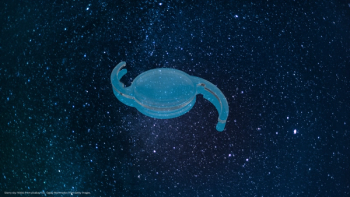
Astigmatism correction with a toric IOL
Traditionally, corneal astigmatism in cataract patients has been addressed through corneal correction by means of corneal incisional relaxing techniques, excimer laser keratectomy and, most recently, by means of femtosecond laser astigmatic keratotomy.
In cataract surgery the need to satisfy refractive outcomes related to optimal visual performance has characterized technological advances concerning phacoemulsification techniques and intraocular lens (IOL) design over the last decades.
However, nowadays preoperative corneal astigmatism is still a significant barrier to optimization of cataract surgery outcomes. It has been estimated that 15% to 29% of cataract patients have more than 1.50 dioptres (D) of corneal or refractive astigmatism.
Traditionally, corneal astigmatism in cataract patients has been addressed through corneal correction by means of corneal incisional relaxing techniques, excimer laser keratectomy and, most recently, by means of femtosecond laser astigmatic keratotomy.
Toric IOLs are routinely used as an alternative method of correction of corneal astigmatism in pseudophakic patients. The use of the toric lens has simplified the surgical technique eliminating the risks of any perforations related to corneal relaxing incisions and reducing the problems of quality of vision sometimes associated with corneal refractive surgery with excimer laser.
The design and the material of the lens appear to play a significant role in the rotational stability. In the early postoperative period rotation of the lens is generally related to a disproportion between the size of the lens and the size of the capsular bag particularly in eyes with high axial length. The late postoperative rotation of the lens is caused by compression of haptic resulting from the capsular contraction.
Several authors reported good refractive and visual results after implantation of Acrysof toric IOLs (Alcon Laboratories Inc., Fort Worth, Texas, USA) demonstrating good efficacy and greater rotational stability compared to previous intraocular lens (IOLs) models.
Newsletter
Get the essential updates shaping the future of pharma manufacturing and compliance—subscribe today to Pharmaceutical Technology and never miss a breakthrough.















































